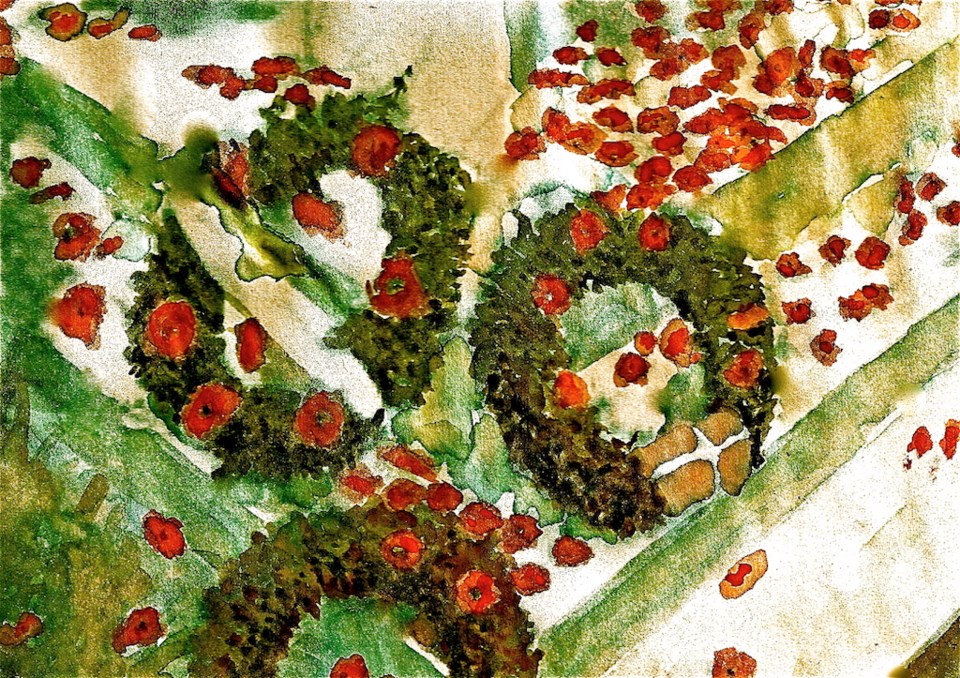Personal histories are seldom precisely recorded for us to read and make sense of the past. Researchers are indebted to the collections preserved in archives, newspapers, museums, family albums, journals, letters and memories. The following is the result of using all of the above. Excluded from this article is mention of people not found “recorded” histories (census data, birth, death and marriage certificate).
A chronology of the First World War and Bowen Island
Bowen pre-war
The summer of 1914 was hot and dry and the Province newspaper suggested that people visit Bowen Island to enjoy the cool sea breeze, shady trees, sandy beaches, and one of the finest cafes on the coast.
The darkening shadows of war must have seemed distant as they were oceans and continents away from Bowen Island.
The Island’s permanent population was increasing as pioneers pre-empted provincial Crown land, claiming it for settlement and agricultural purposes. Farming on Bowen was not easy, the soil was thin and rocky, except around Killarney and Trout Lake where Herbert Smith, James Collins and Robert Green preempted land but even there farming was difficult. However, the land and sea provided in many other ways: there were deer, salmon, herring, trout, grouse, crabs and so much more. Other industries ––logging, mining, ranching, fishing––were enticing more people to Bowen. In 1914 there was a store, a small hotel, a post office and school. The permanent population was approximately 90.
1914
On Aug. 5, 1914, Province printed an extra edition to broadcast the news that Britain and Germany were at war. Canada, a nation of barely 8 million, was automatically at war as well.
At the beginning of the First World War, Canadian volunteers flocked to recruiting offices, eager to sign up for what most thought would be a very short war. Many of the first recruits were unemployed, single men happy to escape an economic depression at home. More than 600,000 men enlisted and served in the Canadian Expeditionary Force.
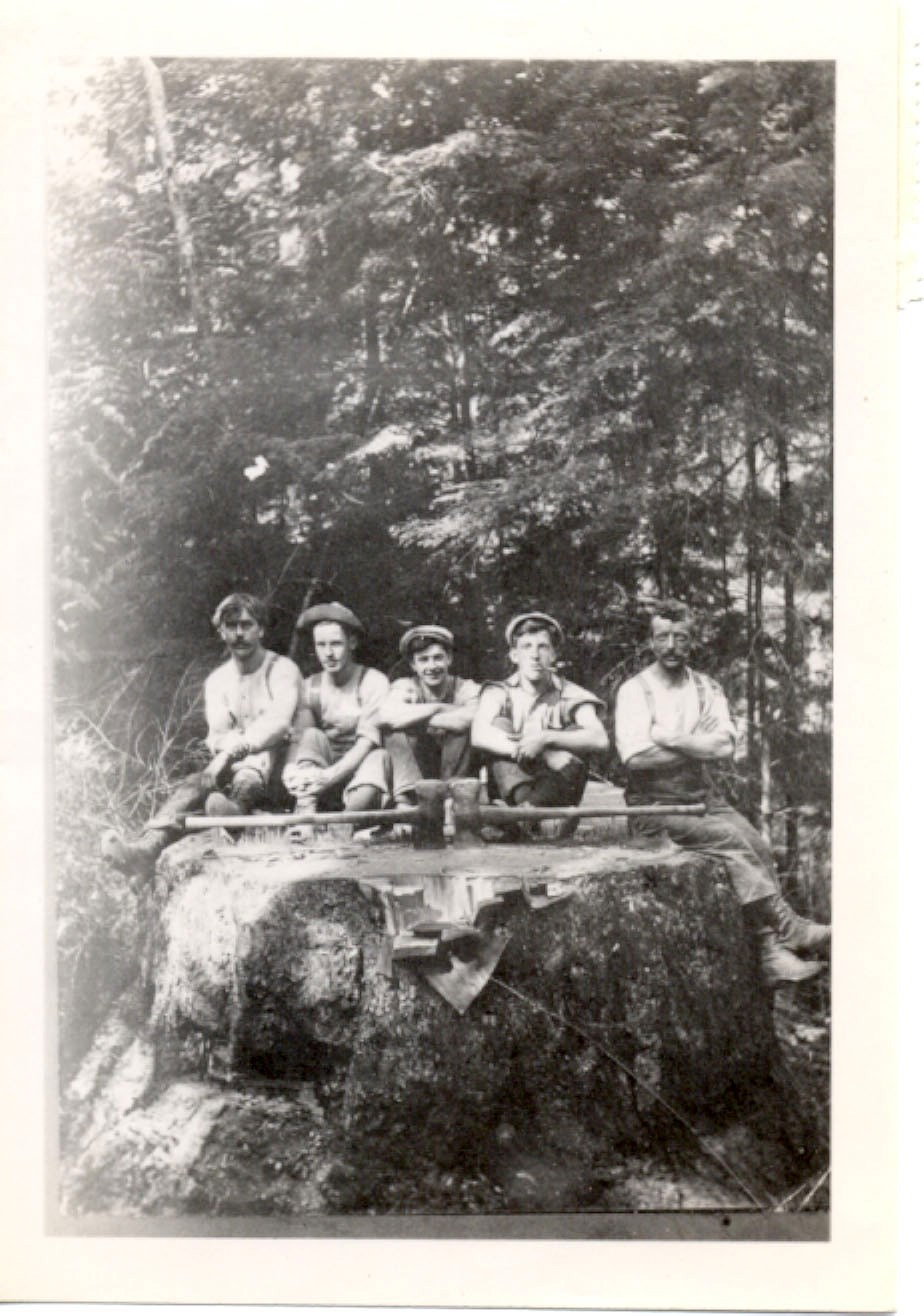
The Bowen Island Roll of Honour records the names of Frederick Billington, Charles Brewer, Ernest Brewer, Walter Brewer, James Collins, Jacob Dorman, Alfred Dorman, George Dorman, Miles Green, Joseph Lessard, Basil Malaher, Fred Magee, Charles Redmond, Cameron Smith, and Norman Vickery as the Bowen men who served. Those 15 men made up about 16% of the Bowen population.
On Sept. 4, 1914, Charles Redmond, 40, was the first to enlist. He was one of the original members of the 16th battalion. On Bowen, Charles and his father were realtors and had registered plans for a Scarborough subdivision of over 150 lots. Charles’ mother, Frances, founded one of Vancouver’s earliest hospitals, Saint Luke’s. On Bowen, Frances built a summer cottage at Scarborough Beach and opened a holiday home for campers and convalescents needing a place to recuperate.
On Sept. 18, 1914 Lewen Tugwell, 22, was the next to enlist with the 7th Battalion, the Irish Fusiliers. His name is found on the cenotaph, although not on the Roll of Honour. In 1914, Lewen and his mother, Mary Wild Tugwell, were in the process of pre-empting land on Graham Island in the Queen Charlottes when he enlisted. He stated his occupation as a farmer and his home address as Bowen Island.
1915
The next to enlist, on April 10, 1915, was 18-year-old farmer, Ernest Brewer. He joined the 47th Battalion, and left for Britain in November, 1915. They landed in France on Aug. 11, 1916, where he fought as part of the 10th Infantry Brigade in France, and Flanders until the end of the war.
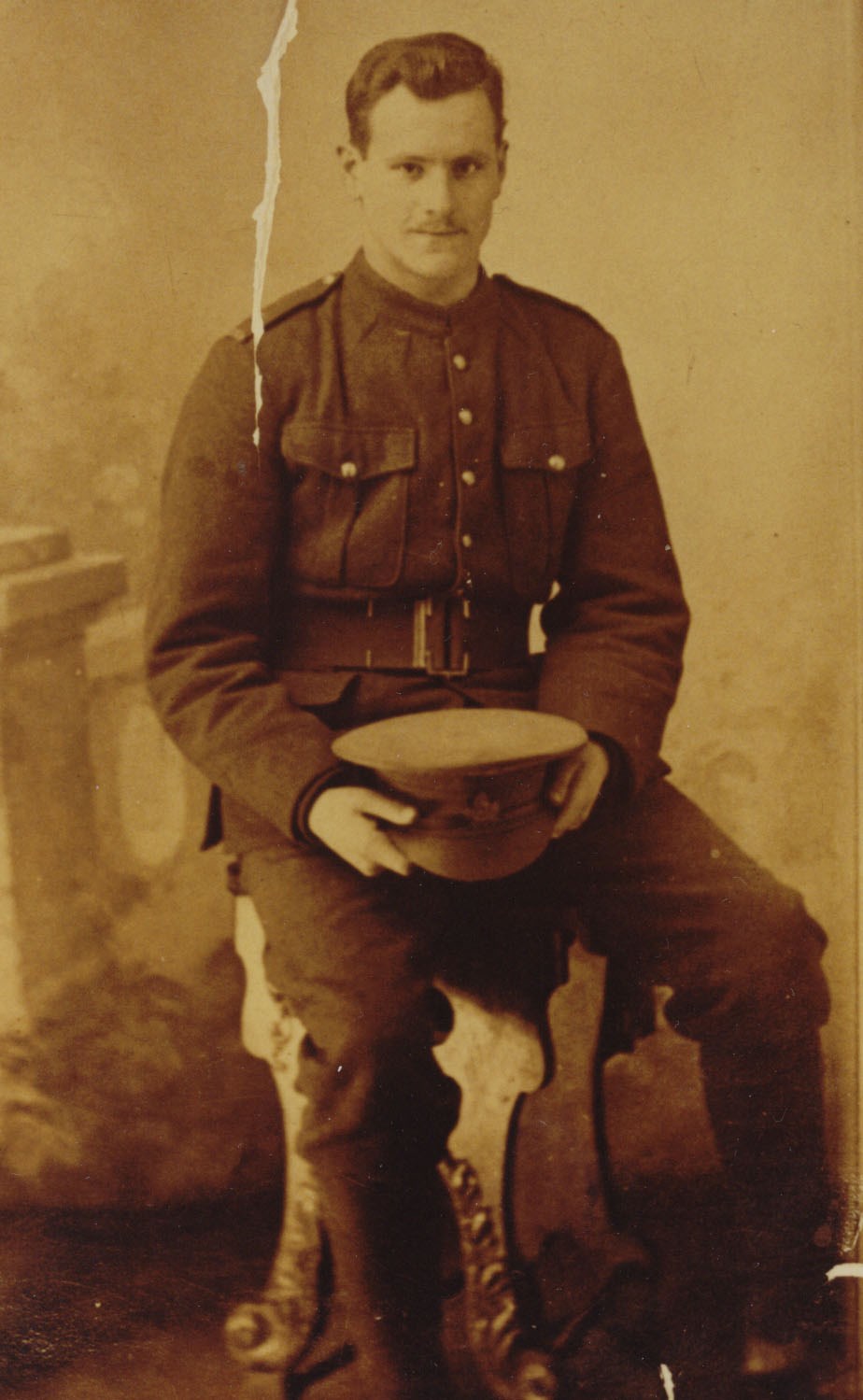
Miles Green, a farm boy from Bowen, enlisted at the age of 19. The Green family came to Bowen in 1899 and pre-empted and farmed 160 acres in the valley, in the place we now call Camp Bow-Isle. His mother, Matilda was the first commercial baker on the island, making bread for the campers. Both of Miles’ parents died before 1915, leaving behind eight children. Miles was the only male child in his family old enough to serve in the war.
Cameron Smith, 27, enlisted with the 11th Battalion Canadian Mounted Rifles in March, 1915. He was one of six children and the only son of Herbert and Margaret Smith. Cameron was an outstanding runner, participating in numerous long distance races.
Margaret Fougberg (nee Collins), remembered Cameron as a kind uncle who left behind money for Christmas gifts for his sisters’ children before he went overseas.
Jacob and Sarah Dorman came to Bowen Island in 1905. Jacob, a steam engineer by trade, bought a merry-go-round with a calliope that played three tunes and operated it in the Snug Cove picnic grounds. Jacob and Sarah had eight children. By 1914 Jacob Dorman had already had a military career, having served in the Boer War. He was too old to fight overseas and served at Vernon, B.C. where there was an internment camp.
In May of 1915, Charles Redmond’s letter to his mother described his battalions action on the Western Front, when the 10th Battalion Canadian Light Infantry, supported by the 16th Battalion, fought in the Second Battle of Ypres. This battle saw the first major gas attack by the Germans.
“You will know that I came through for I cabled. The Germans broke through and we charged them, the 18th and 16th battalions together on the left, done them out of the trenches and through the woods holding them there all day in the midst of the night, how anyone came out of it as a miracle. The gunfight was awful. They attacked us on our right and the 48th, and the 5th Royals held them back. The whole Canadian Division was an action we held them until the British division came up. The 10th Canadian battalion fired its last shots at 200 yards point blank at the Germans before they retired. The battle lasted a week, and is still going on but not so vigorously. They say that this was the worst battle of the war. Anyway, I don’t want to see another like it. Our drafts arrived from England and I expect that we should have a rest soon to refit. I’ve been sick for the last three days I think it must have been the gas used by the Germans. I’ve been back with the transport but I now nearly recovered so soon will join the boys again. You’ll see by the papers that we have much to be thankful for. Tell Mrs. Harvey I received her parcel a few hours before we started into action. And we ate the contents, chocolates, sitting on the canal and very nice they were. The weather here is lovely which is a good thing for the wounded. Tell the boys to enlist, we need them as casualties are enormous and the Germans have lots of men, food and guns despite what the papers say. Your loving son, Charles.
On May 21, 1915 Charles Dalrymple Redmond died.
The following was published in the Province in May 1915.
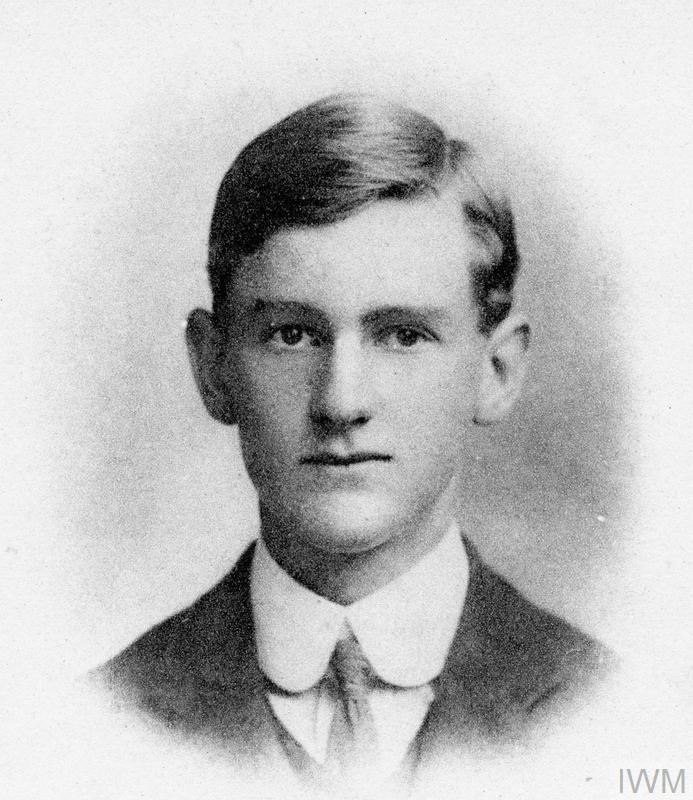
“Private Lewen Tugwell, 166003, 7th Battalion, Canadian Infantry, officially reported as “badly wounded and taken prisoner in April last at Langemarack unable to complete march to Roulens. So far his friends have been unable to trace what has become of him. Any person having any further information of the fate of Private Lewen Tugwell is earnestly requested to communicate with his sister Mrs. Caffin, St. Peter’s rectory, 118 39th Avenue West. South Vancouver.”
Lewen was listed as Missing in Action on April 24, 1915 during the heavy fighting near St. Julien, Belgium, at the Second Battle of Ypres. This battle began with a German attack from April 22 to the 24 and is well known for the first use of poisonous gas by the Germans. It is the same battle that Charles Redmond described in his final letter home. Lewen Tugwell most likely died shortly after this attack but not was officially declared dead until January 1917. For more than two years his family searched for anyone who could provide answers to his whereabouts.
On Oct. 19, 1915 Frederick Billington, 44, enlisted with the 72nd Battalion. He was married to Annie Laurie and had three children. By 1908 the family had settled in Grafton Bay and built a home named Glen Rosa. The 72nd Battalion was involved in some of the bloodiest battles of the war, including Ypres, the Somme and Vimy Ridge.
Soon after Frederick, in December, Alfred Dorman enlisted. He was a steam fitter. When Alfred went overseas he worked as a sapper. He was with a specialized troop that dug tunnels from one trench to the other in order to plant explosives underneath the enemy trenches. These would then be set off either to cause disruption in the enemy lines, or to signal the start of an attack. His brother George was also overseas fighting, and Alfred mentions looking for George in a letter.
1916
Charles Brewer, 40, joined his son Ernest overseas when he enlisted with the 88th Battalion on March 28, 1916. He lists Bowen island as his place of residence, and his occupation as a carpenter.
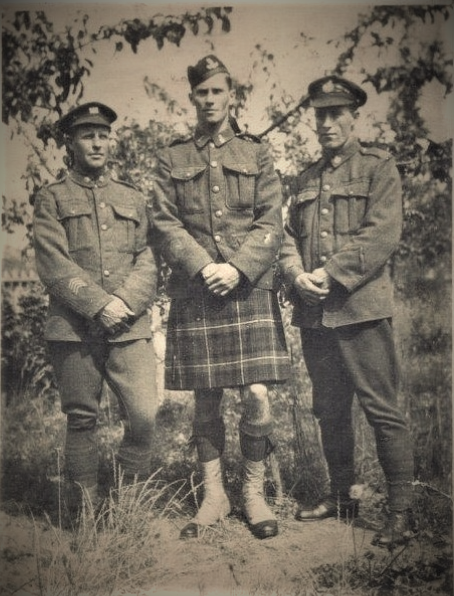
Miles Green, at the age of 20 was shot and killed in the fighting at St. Eloi Craters on April 10, 1916. His sister wrote, “He had lived on Bowen Island where he was well known as a fine industrious chap, with a promising future.”
Walter Brewer followed his father and brother, when he enlisted with 196th battalion on April 12, 1916. This was a battalion made up primarily of students who were enrolled in the universities of Western Canada. The concept for the unit began in February 1916, when students from the Universities of Manitoba, Saskatchewan, Alberta and British Columbia, wanting to maintain their university identity, lobbied the Minister of Militia, and convinced him to authorize the formation of a Western University Battalion. Each university was to raise a company of about 250 men.
On June 13, 1916 Ernest Brewer was wounded at the Battle of Mount Sorrel.
George Dorman, 21, enlisted in the 11th Battalion. It was originally a Mounted Infantry, but when the unit landed in France on September 1916 the conditions on the Western Front made horses more of a hindrance than a benefit.
The island must have felt a huge loss in September 1916 when Frederick Magee, James Collins and Isaac Miller enlisted. They served together in France in the 242nd Forestry Battalion.
Fred McGee, 40, a rancher, was married to Iona, and had nine children.
James Collins, a farmer, was married to Laura Irene, Cameron Smith’s sister. The Magee and Collins farms were close to one another other. Before the men left, Fred and James cut a new trail and a narrow road linking the two homes. In the fall of 1916, Irene Collins, with three children, Margaret, Bertha and Jimmy went down to the float in Deep Bay and watched as James and Fred boarded a small boat and left Bowen to go off to war.
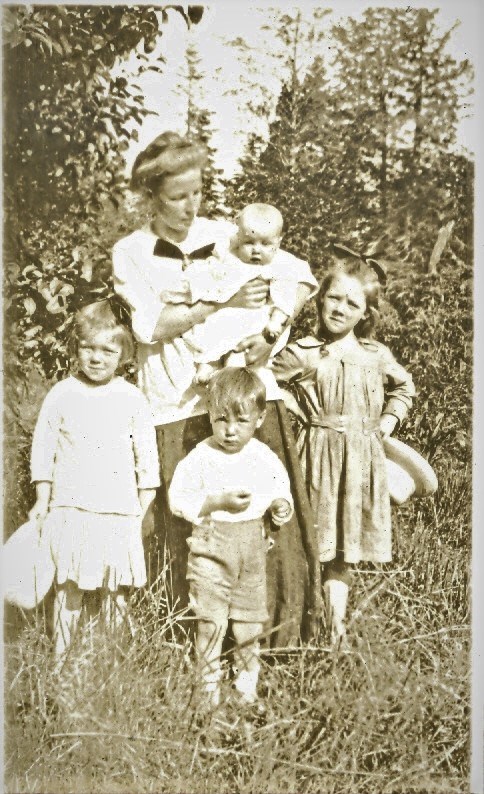
Like so many other women, Laura Irene Collins stayed home cared for her children, home, farm, cows and chickens. With help from her father, Herbert Smith, she planted and cared for a garden and arranged to have hay cut by volunteers in the summer. She sold milk to holidaying families and in the evening she wrote letters, knitted and prepared food parcels for her husband and her brother Cameron Linklater Smith.
In January 1917 she gave birth to Betty. In the photo above, Irene Collins is holding the daughter James would not meet until he returned home after the war.
Norman Vickery, 39, enlisted in the 43rd battalion in October 1916. When Norman lived on Bowen, he ran the Davies General Store with his partner, Mr. Walsh.
1917
Basil Malaher enlisted on Jan. 15, 1917. In the archives we have a photograph of Basil Malaher’s house. Gladys (Basil’s wife) is in sunbonnet is sitting on the veranda with feet on the upper lawn. This tranquil image must have been a sharp contrast to the fighting he witnessed overseas.
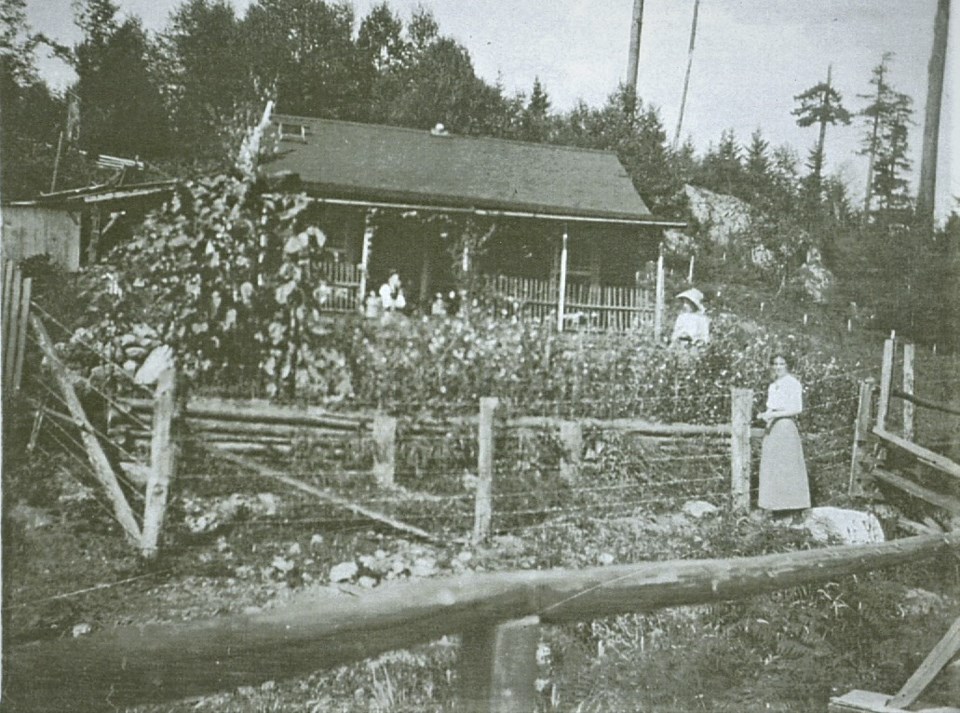
In a letter written on April 4, 1917 by George Dorman from “Somewhere in France” he mentions that he has not seen his brother Alf in some time. He writes that he saw Cameron Smith “the other day and I am going to over tonight see him”…”Old Bowen Island would look good to me now––so that I could be able to go out and get a deer or two.” Cameron Smith died on April 9. On Bowen, it was Margaret Collins, Cameron’s niece who delivered the telegram that announced Cameron’s death.
The majority of the Canadian battalions spent the winter and spring of 1917 at Vimy Ridge. When they arrived in late 1916, Vimy Ridge was a relatively quiet place to be stationed. Earlier attempts to take the Ridge cost the French 150,000 casualties in 1915, and the British 50,000 casualties in 1916. The Canadians did not sit idle. Men from all four Canadian divisions were united for the first time. The Canadians spent the month prior to the initial attack digging tunnels from the rear to the front line. Some of the tunnels extended as far as no man’s land. They spent the six weeks prior to the Battle of Vimy Ridge in strenuous preparation, rehearsing every detail of the planned attack. At 5:30 a.m. April 9, all four Canadian divisions, in-line on the four mile front, opened fire on the German lines. The 1st, 2nd and 3rd Canadian Divisions achieved their goal on the first day. The 4th Canadian Division and captured Hill 145 the following day. On April 12, the final knoll was taken and the entire Vimy Ridge belonged to the Canadians.
Victory came with a heavy loss. The Canadian suffered 10,602 casualties. It was here on April 9 1917, that Cameron Linklater Smith, at the age of 29 became a Vimy Ridge statistic.
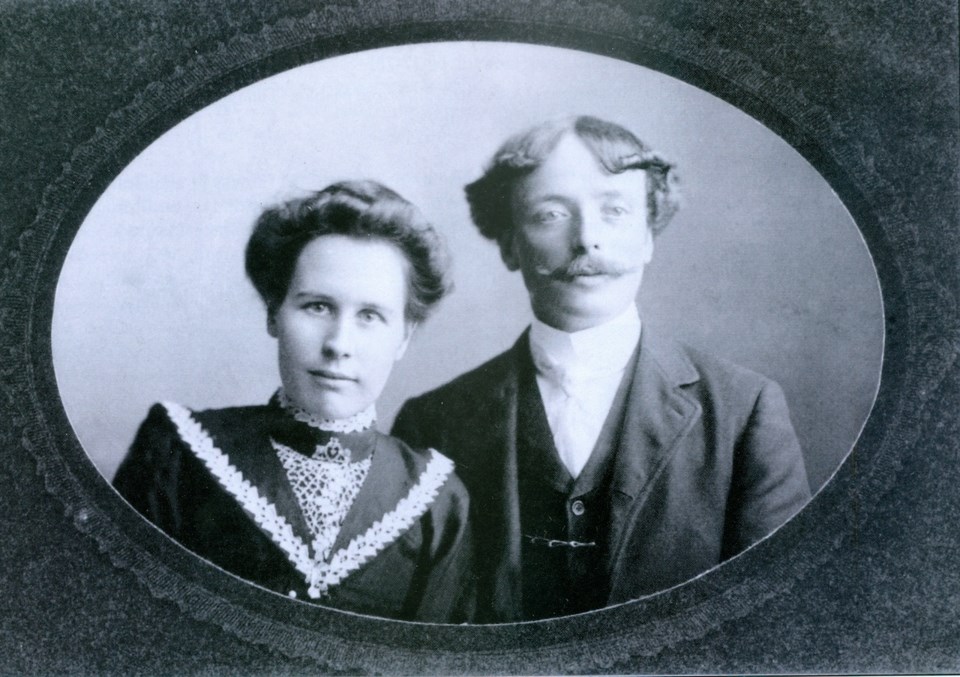
Fred Billington was wounded at the battle. Billington was one of the hundreds of thousands of soldiers gassed during the war. He was shipped back to Vancouver and spent a great deal of time in Shaughnessy Military hospital. He was so badly incapacitated that returning to normal working life was not an option. He never returned to Bowen.
1918
Norman Vickery died on Jan. 20, 1918. His name is one of the 11,285 names of Canadian soldiers found at the base of the Vimy Ridge Memorial who are listed as missing and presumed dead. These soldiers disappeared in the chaos of war and their bodies were never recovered.
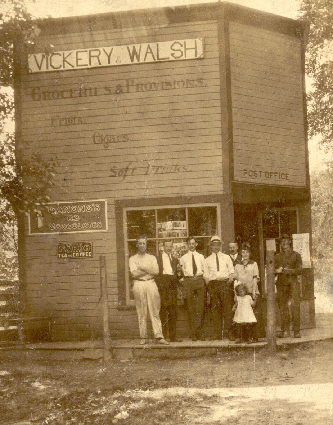
George Dorman was 23 when he was wounded at the Battle of Cambrai in September 1918. He was hospitalized in England, where he met and fell in love with Gertrude Marie O’Reilly, a nurse whom he later married.
First World War ends with a cease fire on November 11, 1918.
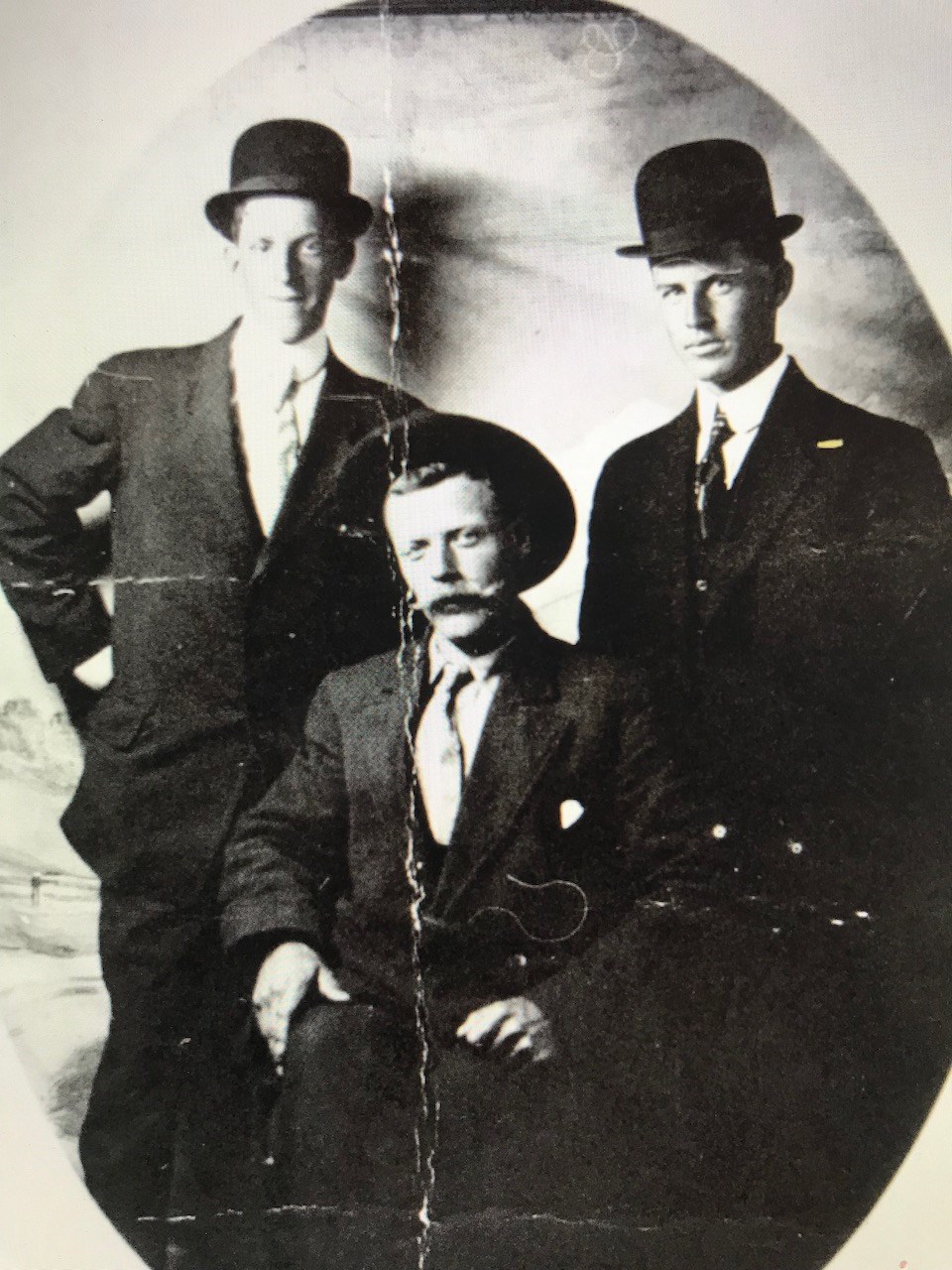
We remember the men who volunteered to fight overseas and were killed: Lewen Tugwell, Cameron Smith, Miles Green, Charles Redmond, and Norman Vickery. We do not know what happened to Joseph Lessard, Ernest, Charles and Walter Brewer after the war. They survived but did not return to Bowen Island. We remember their courage and sacrifice. We remember the men who were wounded and did not return to Bowen: Fred Billington, and George Dorman. And we remember the men, Jacob Dorman, Alfred Dorman, James Collins and Fred Magee who returned to their homes on Bowen to help establish the community that we all enjoy today.
